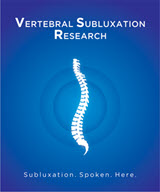Thought Leaders Within the Chiropractic Cartel Envision the Future of Chiropractic

Not One Mention of Vertebral Subluxation & No Representation from the "Straight" Chiropractic Community - Yet Authors Claim Diversity & Inclusion
In a recent article published in the Journal of Chiropractic Humanities, titled "Chiropractic Day 2023: A Report and Qualitative Analysis of How Thought Leaders Celebrate the Present and Envision the Future of Chiropractic," a group of hand picked chiropractic professionals painted a rosy picture of the chiropractic profession. They outlined a vision where chiropractors serve as primary spine care specialists focusing on musculoskeletal disorders, collaborate seamlessly with other healthcare providers, and play a pivotal role in various healthcare settings. While this perspective may sound promising, it's essential to critically examine these claims and assess whether the article truly represents the diverse viewpoints within the chiropractic community.
One glaring issue with the article is the absence of "straight" chiropractic perspectives. Despite claiming to include a wide range of thought leaders and stating "We aimed to capture views that would represent most chiropractors and include the majority and minority groups (ie, mixer, straight) of the profession", the authors failed to provide a platform for those within the straight chiropractic community. It is assumed that Gerry Clum DC, representing Life University, is who they chose as a representative of "straight" chiropractic. However, it's important to note that Life University is not a "straight" chiropractic school, and Clum's statements do not align with straight chiropractic ideology.
Furthermore, one of the most conspicuous omissions in the article is the absence of any mention of the concept of vertebral subluxation, which is considered a core tenet of the chiropractic profession. The fact that this fundamental aspect was not addressed by any of the "thought leaders" makes clear the intention of the authors and the representation of the chiropractic field they chose.
Additionally, the article prominently claims to have honored diversity, equity, and inclusion by showcasing a variety of viewpoints within the chiropractic profession. However, the absence of representation from the straight chiropractic camp and the complete omission of any discussion regarding vertebral subluxation raise significant concerns about the extent of diversity included. Vertebral subluxation is a fundamental concept within chiropractic, and its absence in the article's discourse is a clear indicator that an essential perspective has been purposely overlooked. True diversity and inclusivity encompass not just different voices within the chiropractic profession but also the full spectrum of ideas, beliefs, and core tenets that make up this multifaceted field. Without representation from the straight chiropractic community and a discussion of vertebral subluxation, the claim of diversity within the article rings hollow, leaving the most important aspect of chiropractic unaddressed.
It is striking that the worldviews articulated by the self-proclaimed "thought leaders" in this article predominantly align with a pathogenic model of disease diagnosis and treatment, a paradigm rooted in allopathic medicine rather than the foundational principles of chiropractic care. The absence of perspectives from the straight chiropractic community, which emphasizes the management of vertebral subluxation, represents a glaring void in this discussion. Unlike the pathogenic approach, straight chiropractic is inherently salutogenic, focusing on the body's innate ability to heal and adapt when interference, from vertebral subluxation, is removed. It adheres to a vitalistic philosophy that recognizes the inherent life force within each individual. By neglecting these essential chiropractic principles in favor of a pathogenic model, the article not only fails to provide a holistic representation of the chiropractic profession but also overlooks a vital and distinct facet of chiropractic care.
While the article paints a picture of chiropractors working side by side with other medical and allied health care providers in hospitals and multidisciplinary settings, it is essential to recognize that chiropractors are portal-of-entry providers, not primary care providers. This distinction is crucial, as it impacts the scope of care they can offer to patients.
While the Journal of Chiropractic Humanities article tries to present an optimistic view of the chiropractic profession it reads more like a marketing piece for the Chiropractic Cartel, and it must be viewed with a critical eye. The absence of "straight" chiropractic perspectives, the omission of key chiropractic principles like vertebral subluxation, and the dominance of voices from within the Chiropractic Cartel's medically oriented establishment raise questions about the article's objectivity and inclusivity. As the chiropractic profession continues to evolve, it is essential to consider the fundamental role that management of vertebral subluxation in a vitalistic and salutogenic model plays to ensure the best possible chiropractic care for patients.

Blogs
- The Chiropractic Cartel: A Look Back at Bias in Accreditation and its Imact on Today's Profession
- Inside Montana's Chiropractic Monopoly: ACA & MCA's Brazen Board Takeover
- Concerns Grow About Control of the NY State Chiropractic Board by the ACA - Use of X-ray in NY Under Threat
- Reproductive Health Information and Chiropractic Care: Navigating New Privacy Regulations
- Navigating Substance Use Disorder (SUD) Consent: What Chiropractors Need to Know













